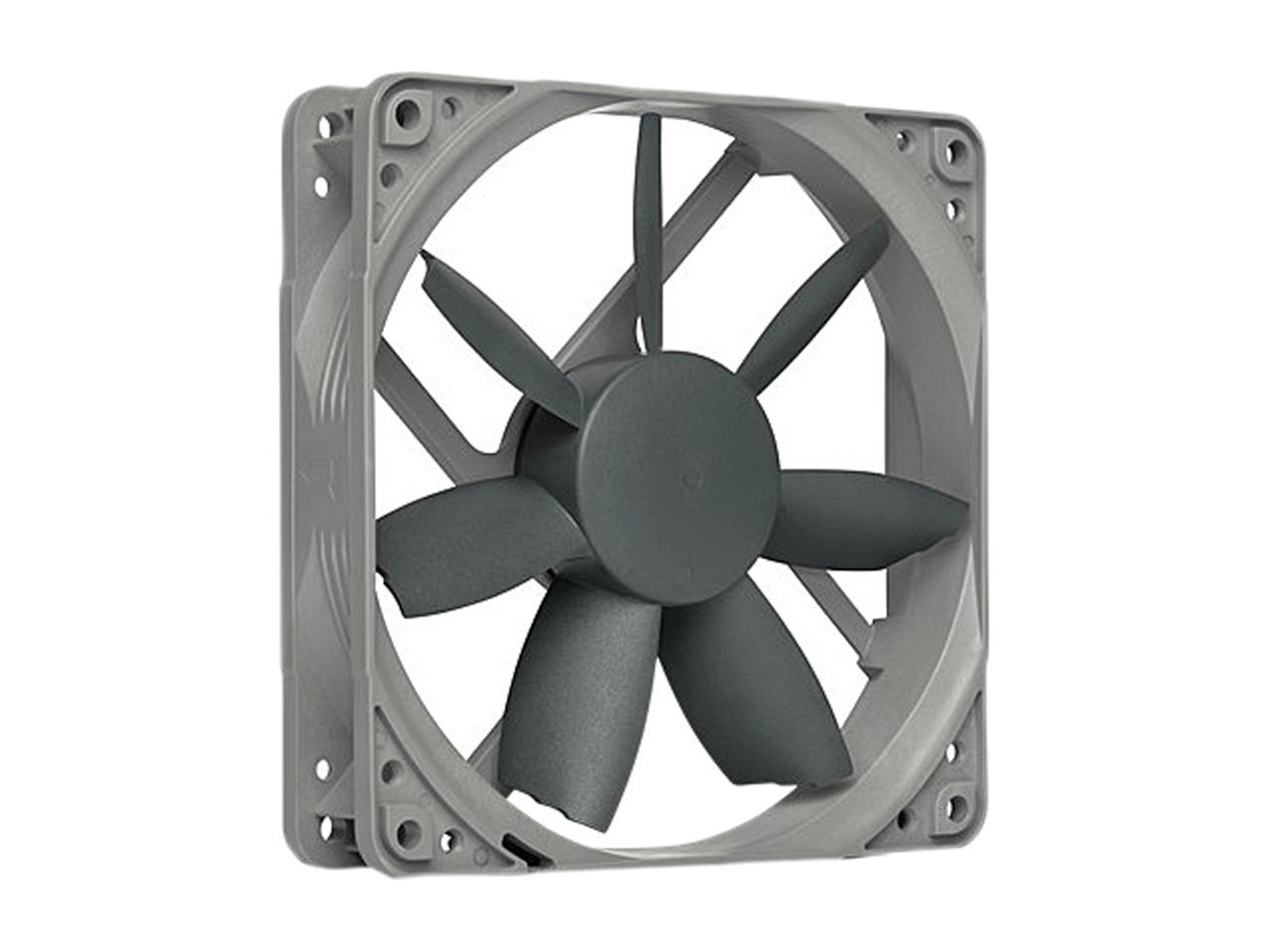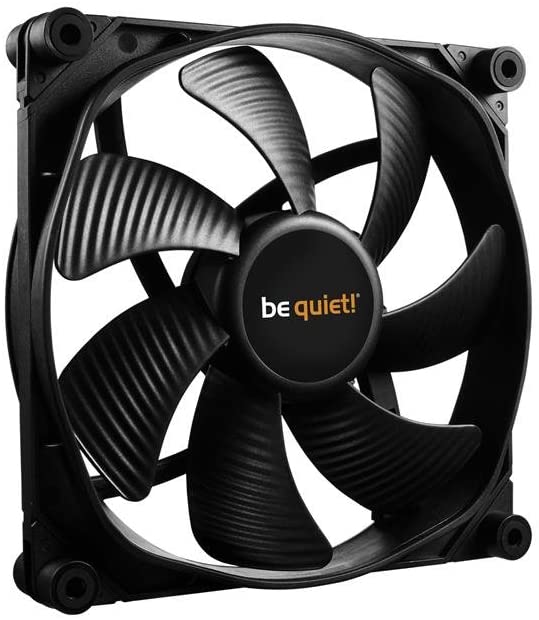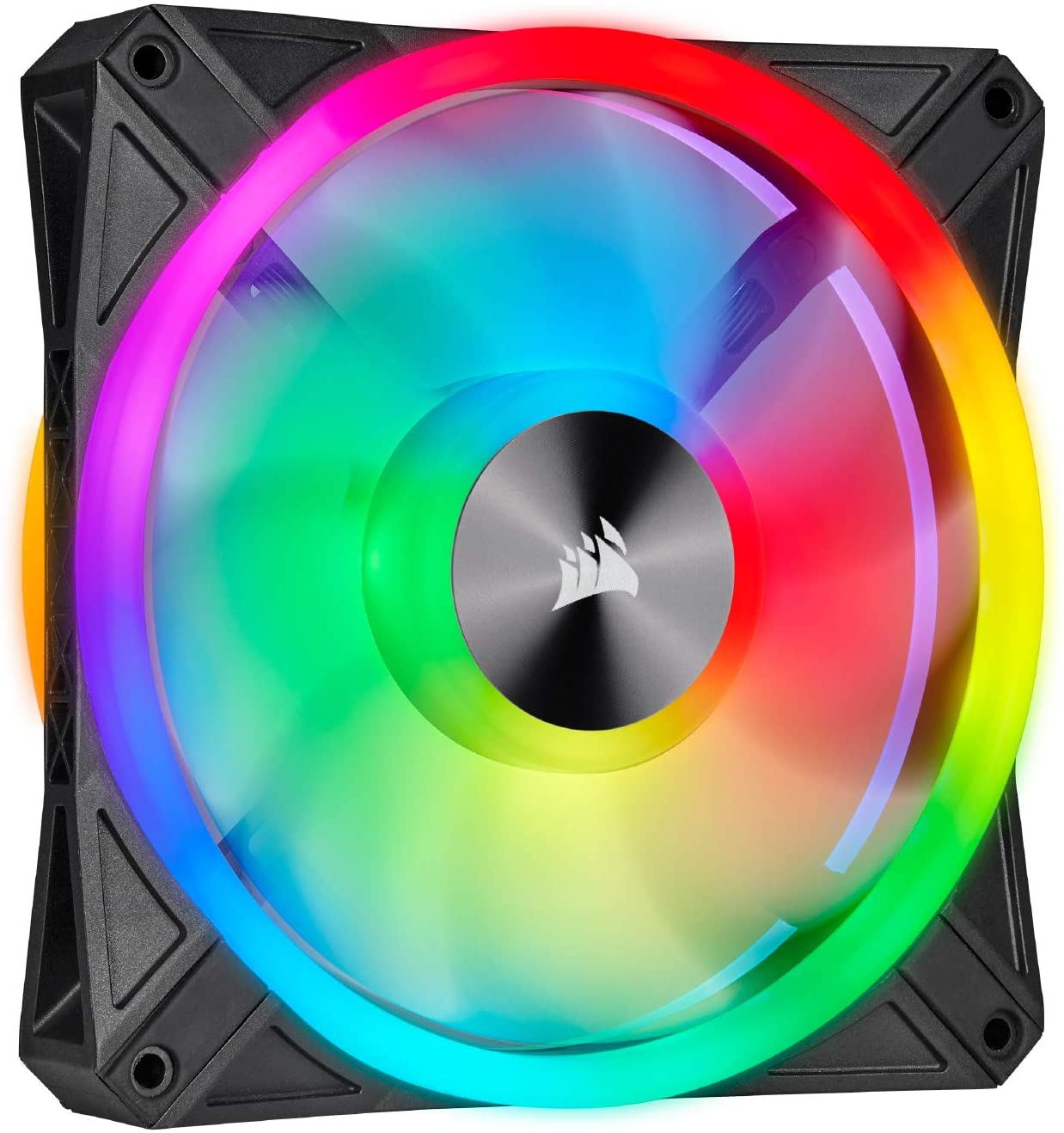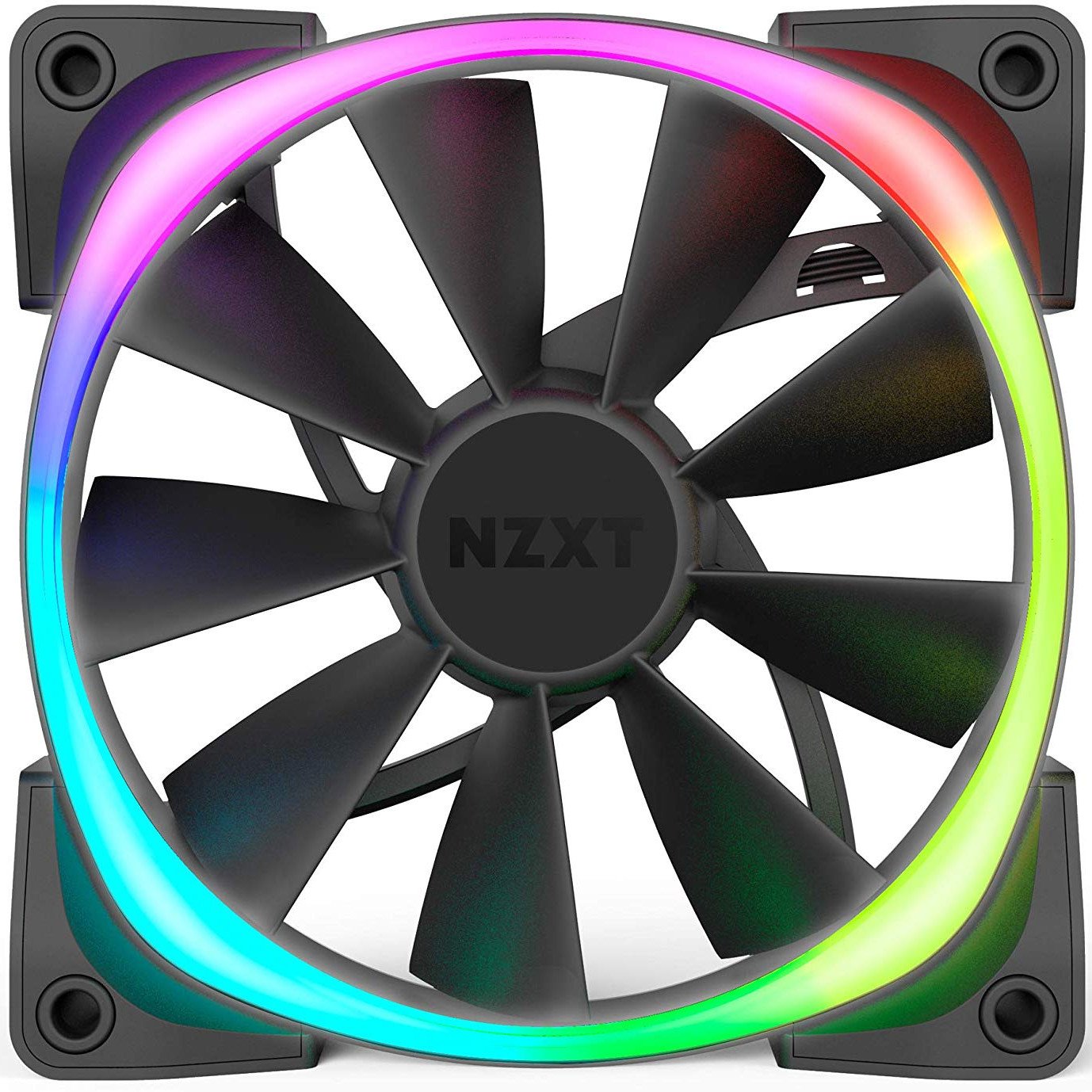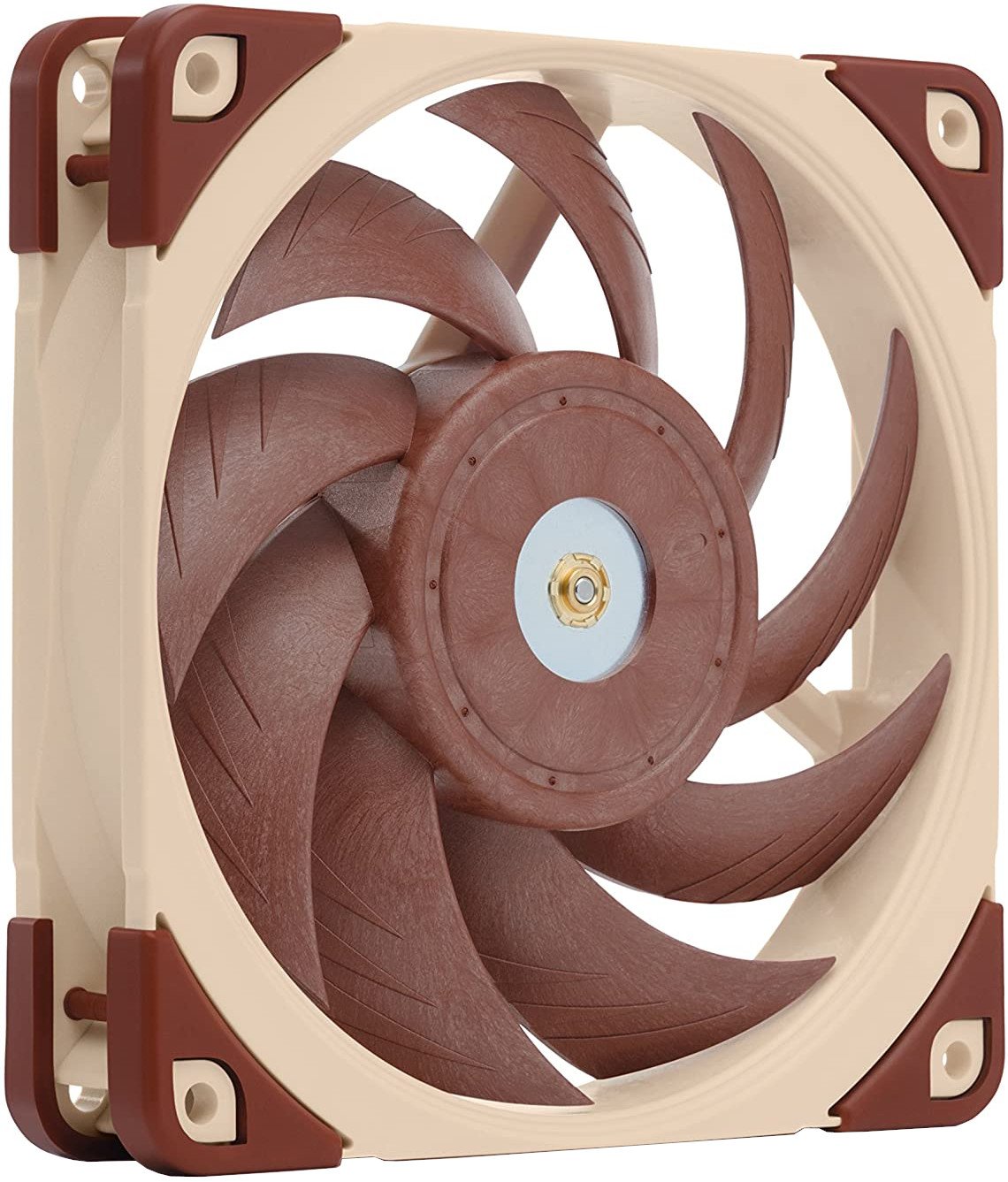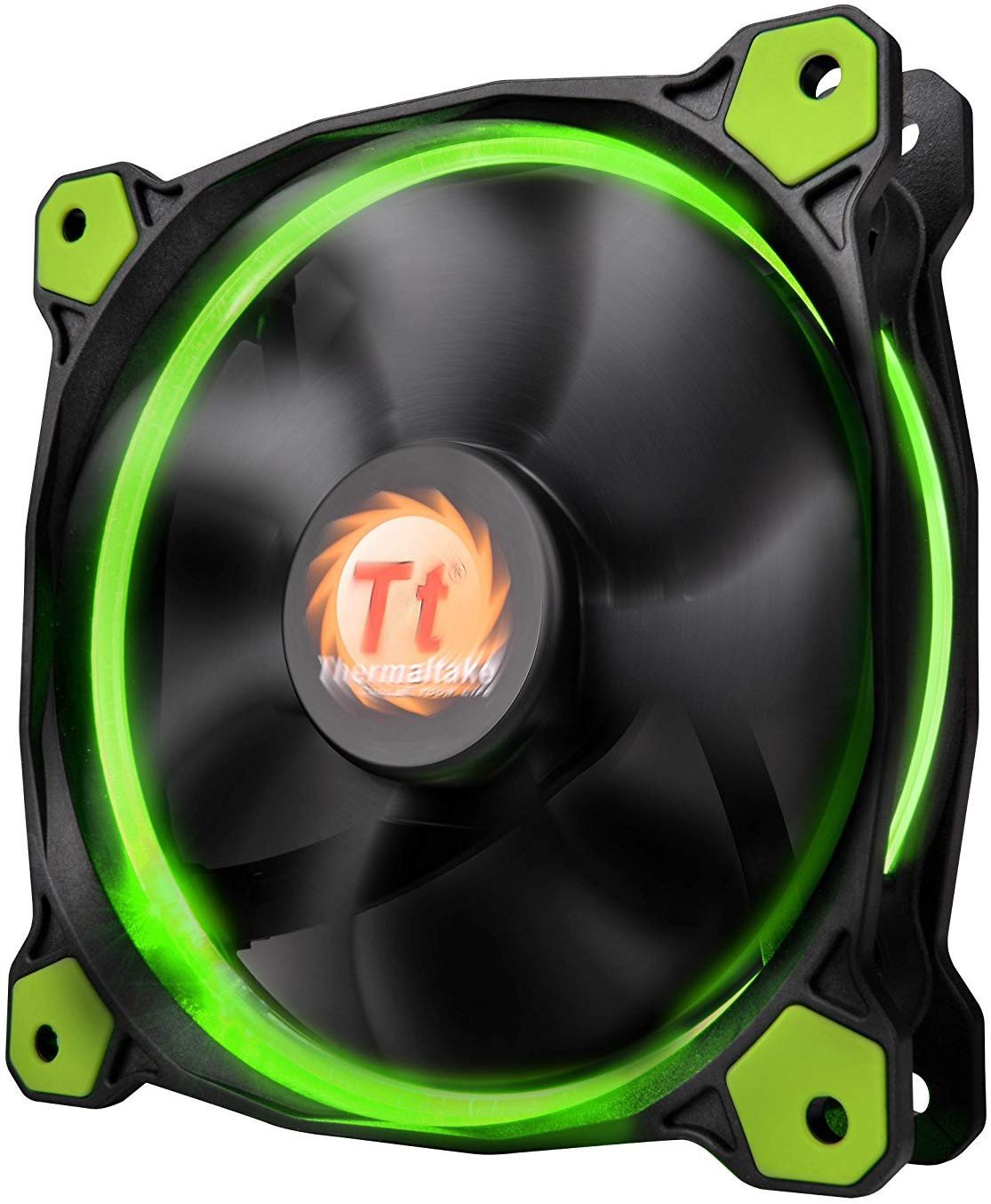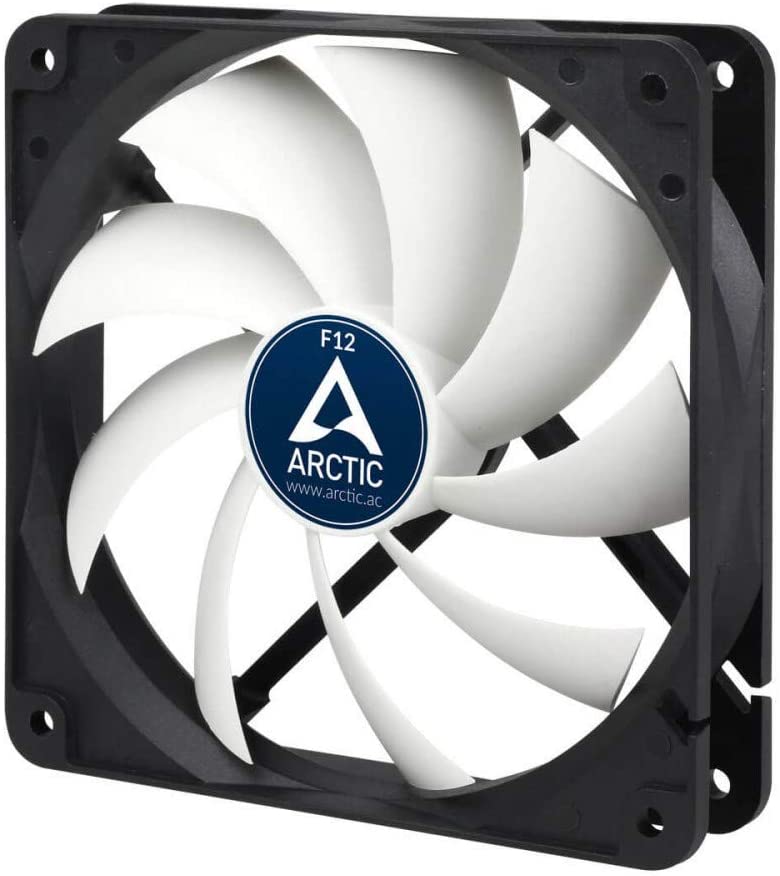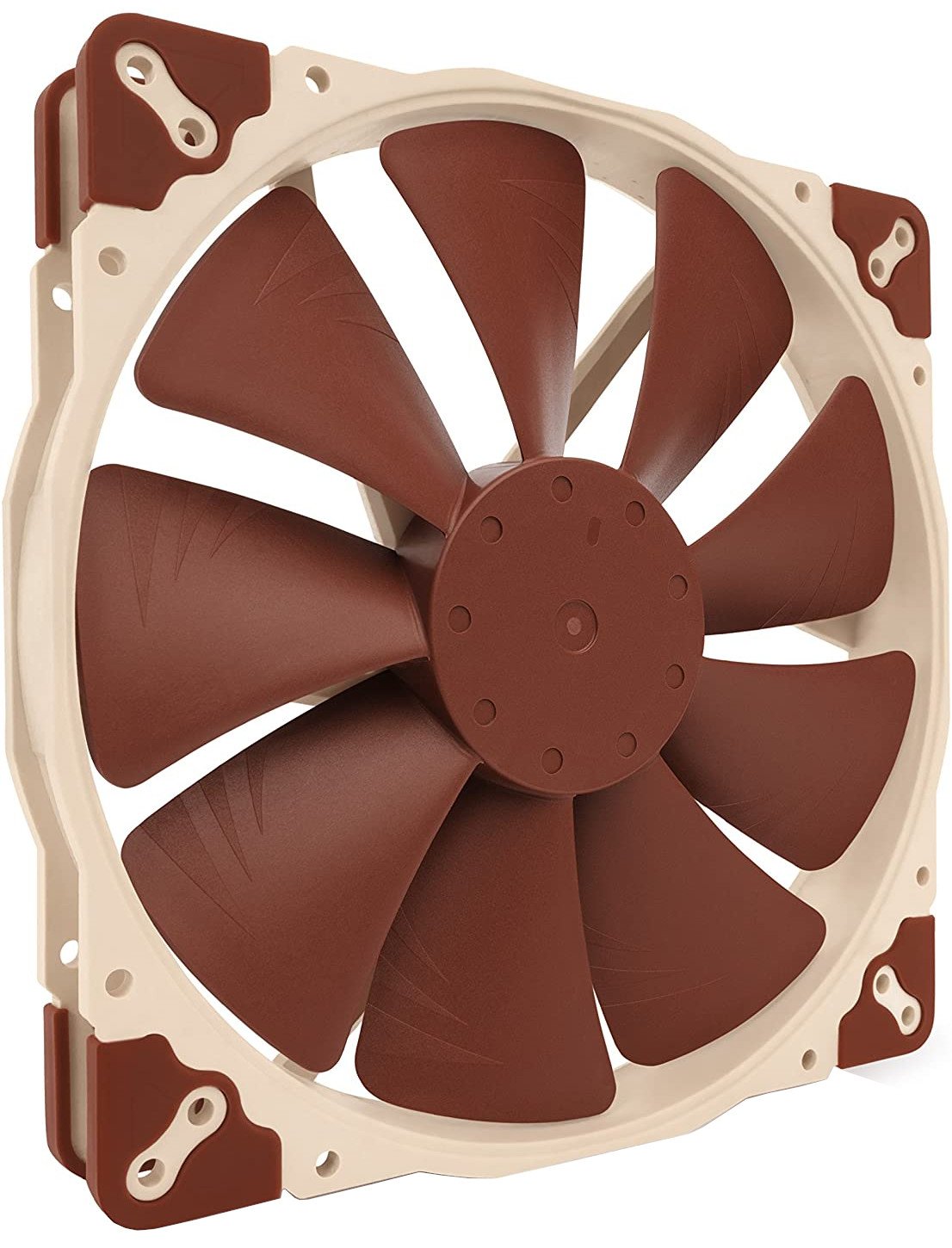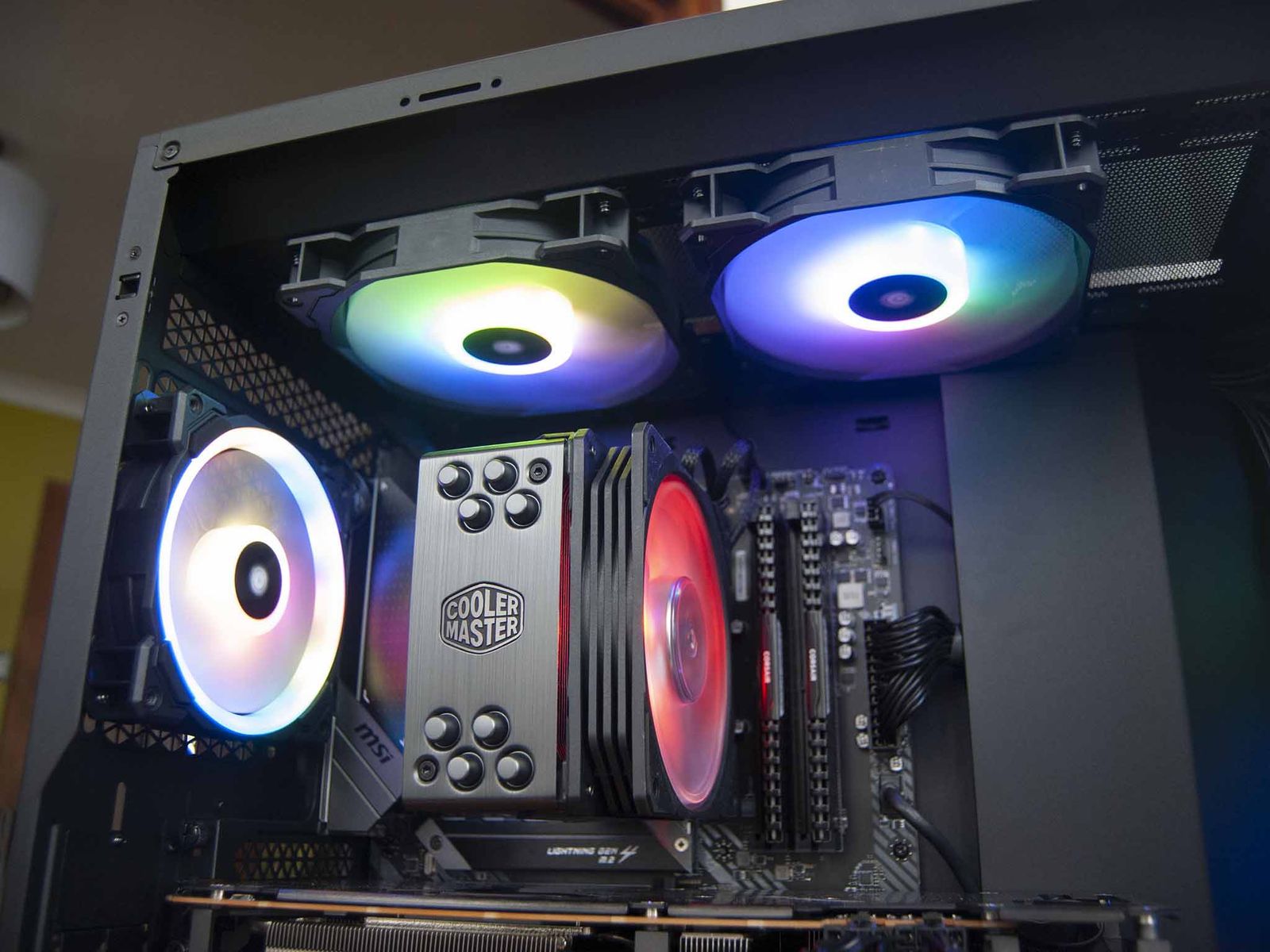 Source: Windows Central
Source: Windows Central
Best
Computer Fans
Windows Central
2021
There are so many PC fans out there that it can often be difficult to locate one that will not only provide enough airflow to keep everything cool within the best PC case, but one that will also look good and match your overall aesthetic. We’ve rounded up the absolute best case blowers available right now for your next PC build.

Size: 120mm (120 x 120 x 25 mm) | Noise: 18.1 dBA | Airflow: 60 CFM | Pressure: 1.31 mm/H2O | Speed: 1200 RPM | PWM: Yes | LED: –
Noctua is renowned for making some of the best PC fans out there, but the company also makes some of the worst-designed blowers too. Luckily, the SNF-S12B Redux isn’t too bad in the looks department, though you may struggle to match this to a PC build. Still, if you can work these fans into your next build, you’re going to have an amazing time keeping everything cooled with full PWM control.
This blow is capable of passing through 60 cubic feet of air per minute (CFM). This is an impressive number compared to many fans out there, especially at this price point. This is largely thanks to the optimized blade design that maximizes airflow. You’ll immediately notice just how quiet the SNF-S12B is too, coming in at a maximum of 18.1 dBA, which is about as noisy as rustling leaves.
Pros:
- High performance
- Somewhat affordable
- Outstanding airflow
- Very quiet
- Anti-vibration rubber mounts
Runner-Up: be quiet! Silent Wings 3

Size: 120/140mm (120/140 x 120/140 x 25 mm) | Noise: 15.5 dBA | Airflow: 59.5 CFM | Pressure: 1.08 mm/H2O | Speed: 1000 RPM | PWM: Yes | LED: –
be quiet!’s range of Silent Wings 3 comes in 120mm or 140mm flavors, and can be had with (or without) PWM as well the choice of high-speed variants. Depending on what you need for your PC case, be quiet! will have a Silent Wings 3 tailored to your requirements. These blowers are incredibly quiet, measuring in at just 15.5 dBA — your breathing is almost this loud.
With an airflow rating of around 60 CFM, it comes in at a similar level to our top Noctua pick, though doesn’t quite have as much of a hefty punch as NZXT’s Aer RGB range of fans. I wouldn’t recommend these on a radiator due to the static pressure being on the low side, but it’ll be more than a match for any PC case.
Pros:
- Stealthy design
- Decent airflow
- Extremely quiet
- Anti-vibration rubber mounts
Best for RGB: Corsair QL Series

Size: 120mm/140mm (120/140 x 120/140 x 25 mm) | Noise: 26 dBA | Airflow: 50 CFM | Pressure: 1.4 mm/H2O | Speed: 1250 RPM | PWM: Yes | LED: RGB
Like Noctua, Corsair makes some of the best PC cooling fans out there and the QL series is one of the better options for RGB effects. Some RGB fans (like the NZXT Aer 2 recommendation in this very collection) have LEDs on only one side, requiring you to install the fans in a specific way to illuminate the inside of your case.
This isn’t the case with the Corsair QL series of fans as these have a ring of LEDs on both sides of the blower. There’s also a secondary ring of LEDs on the central motor housing. There’s more lighting here than on an international airport runway. The airflow is also pretty good at 50 CFM with a noise rating of just 26 dBA.
Pressure is a little on the weaker side, but these aren’t specifically designed for radiator use. Just make sure to use the Corsair fan controller to get the most out of these expensive fans.
Pros:
- RGB LEDs on both sides
- Well designed
- Good airflow
- iCUE software support
- Anti-vibration rubber mounts
Cons:
- Expensive
- Requires Corsair fan controller
Best Value RGB: NZXT Aer RGB 2

Size: 120mm/140mm (120/140 x 120/140 x 26 mm) | Noise: 33 dBA | Airflow: 91 CFM | Pressure: 1.52 mm/H2O | Speed: 1500 RPM | PWM: Yes | LED: RGB
NZXT’s range of Aer 2 RGB fans is absolutely brilliant. For those who want to create a bright and colorful PC build, look no further than these blowers. When paired up with an NZXT controller hub or motherboard, you’ll be able to fire up the company’s CAM software to control everything (as well as NZXT’s own AIO, PSU, or motherboard).
Compared to our Noctua top pick, NZXT’s Aer 2 RGB actually pumps out more air, coming in at 91 CFM (for the 140mm). The downside to this additional cooling headroom is noise, which comes in at 33 dBA. This isn’t loud by any means and is about the same audible level as a whisper. Still, you will notice the difference at full speeds.
The RGB lighting is handled using a dedicated cable that can be attached to an NZXT motherboard or controller hub, but you won’t have a mess of cabling since these fans can daisy chain to each other. You can use up to a maximum of five devices per RGB channel for NZXT hardware.
Pros:
- RGB effects
- Stylish looking
- Great airflow
- CAM software support
- Anti-vibration rubber mounts
Cons:
- Expensive
- Loud at higher speeds
- Requires NZXT controller or motherboard
Best for Radiators: Noctua NF-A12 Series

Size: 120mm (120 x 120 x 25 mm) | Noise: 22.6 dBA | Airflow: 60 CFM | Pressure: 2.34 mm/H2O | Speed: 2000 RPM | PWM: Yes | LED: –
Noctua really didn’t do much justice with the look of the NF-A12 Series. On the first inspection, you may question why this fan costs as much as it does, but it’s all in the details … or rather, spec sheet. This fan is a monster. You’ve got an airflow of 60 CFM, a noise rating of just 22.6 dBA, full PWM support for controlling speeds, and plenty of static pressure for a tight installation.
What’s the main difference between this Noctua and our top pick? Well, you may have noticed this fan is faster, makes a little more noise, but has the same airflow. That’s because this is more of an all-rounder fan, suitable for radiator mounting too. The Noctua SNF-S12B Redux is really only good for intake or exhaust mounts on cases due to weaker static pressure.
The Noctua NF-A12 also comes with loads of accessories. You get integrated anti-vibration pads, fan screws, extension cables, a radiator gasket, and a Y-cable which can be used to run two fans on the same motherboard header.
Pros:
- Moves a LOT of air
- Very quiet
- Suitable for both CPU and case cooling
- Includes plenty of accessories
- Anti-vibration rubber mounts
Cons:
- Design
- Pricey
- No RGB lighting
- Did I mention design?
Best Value: Thermaltake Riing Series

Size: 120/140mm (120/140 x 120/140 x 25 mm) | Noise: 24.6 dBA | Airflow: 40.6 CFM | Pressure: 2.01 mm/H2O | Speed: 1500 RPM | PWM: Yes | LED: Yes
These budget LED fans from Thermaltake are guaranteed to put some color into your case and still leave your bank balance feeling relatively healthy. Available in both 120mm and 140mm versions, these fans come in a variety of colors such as yellow and orange. These are LED fans without RGB capabilities, so you’ll need to be double-sure about picking the right color.
The airflow is more than acceptable at such an affordable price, so too is the noise at just 24.6 dBA. As a nice touch from Thermaltake, the Riing 12 and 14 series come with anti-vibration mounting pads built in. They’re capable of spinning up to 1500RPM and can be controlled through your motherboard or favorite fan hub controller.
Pros:
- Affordable
- Good airflow
- Low noise
- Well designed
- Anti-vibration mounting system included
Cons:
- LED versions can’t change color
- RGB option is expensive
Budget Pick: Arctic F12

Size: 120mm (120 x 120 x 25 mm) | Noise: 35 dBA | Airflow: 53 CFM | Pressure: 1.00 mm/H2O | Speed: 1350 RPM | PWM: – | LED: –
This is about as affordable as you’ll get for decent PC cooling. Arctic’s F12 series of fans come in a variety of configurations, including packs of three, four, or five, with or without PWM, as well as silent versions. It really comes down to price and how much control you want over the noise and speeds of these blowers.
Noise levels are marketed at 35 dBA, which isn’t too bad given the price per fan. Airflow and pressure aren’t too bad either. While these are some of the more affordable fans on the market, Arctic is far beyond the poor levels of quality you can expect to find with real budget brands. These guys know what they’re doing.
Pros:
- Affordable
- Good airflow
- Pack of multiple fans
- Good build quality
Best Airflow: Noctua NF-A20

Size: 200mm (200 x 200 x 30 mm) | Noise: 18 dBA | Airflow: 87 CFM | Pressure: 1.08 mm/H2O | Speed: 800 RPM | PWM: Yes | LED: –
If your PC case is capable of handling a 200mm fan, I’d recommend installing one to take advantage of the larger diameter. Larger fans such as the excellent Noctua NF-A20 are able to push through more air at lower speeds, resulting in quieter cooling performance. Measuring in at just 18 dBA, this fan is quite literally whispering.
Airflow is ridiculously good at 87CFM, and that’s at a speed of just 800 RPM, which is where this fan will top out at. Pressure isn’t good, but this fan isn’t designed for static pressure. It’s designed to pump as much air into (or out of) your case as possible. There’s PWM support too so you can fine-tune the blower through your motherboard or fan hub controller.
Pros:
- Great build quality
- Amazing airflow
- Low speeds and noise
- PWM control support
Cons:
- Won’t fit inside most cases
- Design
- Pricey
Choosing the best PC fans
The best fan overall is the Noctua SNF-S12B Redux due to its sheer power and almost inaudible operation when it comes to cooling in any scenario. The aerodynamically designed blades will not let you down no matter wherever you choose to put them to use. These fans are like ninjas, so stealthy and silent, you’ll never know they are even there.
That said, Noctua isn’t known for designing attractive fans and this isn’t any exception. The flip side is a powerful punch in the airflow department and a six-year warranty. There’s no RGB, which can be a blessing or a curse, depending on personal preference. There’s nothing stopping you from putting some LED light strips in your PC case if you do desire a light show.
What to look for in a PC fan

There are a few factors to bear in mind when shopping around for a case fan. Even such a basic component of a PC build needs to be carefully considered to make sure you’ll encounter no issues relating to heat. We’ve got a great guide on how to build a PC, but I’ll go over a few things here for choosing case fans.
Airflow
Probably one of the more important factors of any fan is the airflow. It’s no good buying a blower that isn’t going to blow very well, which is why we look at the airflow of a fan to consider which is better on paper. Most of our recommendations here have an airflow rating of 60 cubic feet per minute (CFM) or higher, which is pretty good for the price.
PWM
Pulse-width modulation (or PWM for short) is what allows a motherboard or fan controller to alter the speed of a fan. These fans will have a 4-pin connector and fans without PWM usually have just a 3-pin connector. The major difference between PWM and non-PWM is the ability to run the fan at slower speeds. With just voltage regulation, you may not be able to slow down fans as much.
Size
Fans can come in a variety of sizes, though 120mm and 140mm diameters are the norms. You’ll need to measure (or check manuals) for your PC case to determine what mounts are available and buy computer fans accordingly. Some 140mm mounts will also have holes for smaller 120mm fans, so it depends on how the case is designed.
Noise
Noise is important if you want a silent PC. Here’s a chart showing just how high the levels can go up to, allowing you to compare the above recommendations:
- 140 dBA — Fireworks
- 130 dBA — Jet engine
- 120 dBA — Emergency vehicle siren
- 90 dBA — Hairdryer
- 60 dBA — Conversation
- 40 dBA — Refrigerator
- 30 dBA — Whisper
- 20 dBA — Rustling leaves
- 10 dBA — Breathing
Pressure
Static pressure is what a fan has to overcome in order to blow air, which can cause issues when attached to a filtered intake on a case or a radiator. Because of the high density of fins on these components, the fan usually has to work harder (and louder) to achieve the same rate of airflow thanks to static pressure. A fan’s pressure is measured in mm/H2O, the higher this number the better.
Companies can overcome this slightly by using differently designed blades that are specifically designed for such applications, though this can have an impact on performance on a PC case. Generally, however, any fan will be capable of pushing air around a PC case. It’s only when you want to really make the most of available air and reduce noise do the numbers come into play.
Credits — The team that worked on this guide
Rich Edmonds is a staff reviewer at Windows Central, which means he tests out more software and hardware than he cares to remember. Joining Mobile Nations in 2010, you can usually find him inside a PC case tinkering around when not at a screen fighting with Grammarly to use British words. Hit him up on Twitter: @RichEdmonds.
We may earn a commission for purchases using our links. Learn more.

These are the best motherboards for the AMD Ryzen 5 3600
The motherboard is the heart of your PC, connecting your CPU, RAM, GPU, storage, and all other devices together, allowing the OS to communicate between components. Here are the best motherboards for the AMD Ryzen 5 3600.


